Seri Nabe is a delightful and popular tradition in Japan, offering a warm and communal dining experience. It has a unique history and cultural significance, making it a beloved part of Japanese cuisine. In this introduction, we’ll explore the background, regional connections, and excitement surrounding Seri Nabe without giving away all the delicious details.
What is Seri nabe?
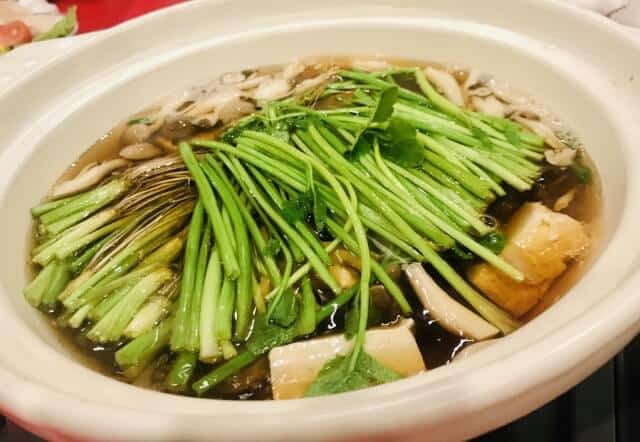
Seri nabe is a hotpot or nabemono dish in Miyagi Prefecture served with a generous helping of root-rooted seri in a soy sauce-based soup made with duck or chicken stock. Miyagi prefecture is Japan’s largest producer of Japanese parsley. 80% of the Sendai Seri brand is produced in Natori City, which is next door to Sendai. It is established nationwide as a Sendai local food due to increased media exposure over the past few years. Since Sendai is close to the production area, some shops serve fresh seri harvested in the morning. Seri hotpot is a new local dish that was developed jointly by a Japanese parsley farmer in Natori and a restaurant in Sendai city. The roots are especially delicious during the coldest months. There are some restaurants where you can eat seri nabe all year round, but we recommend eating it when it’s in season.
What is Seri?
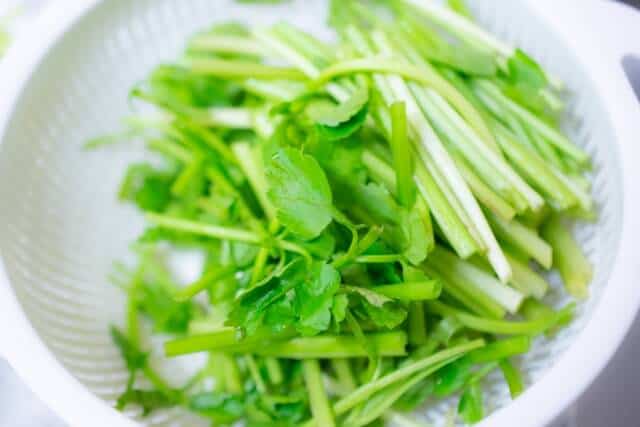
Seri is a plant native to Japan, and it’s one of the seven special herbs that bloom in the spring. You can find it growing near rice fields and in wet areas, and people also grow it as a vegetable. What makes Seri special is its strong and distinct aroma, as well as its unique texture. Seri is also part of the Seven Herb Rice porridge or Nanakusa Gayu.
During the winter season, this ingredient is commonly used in dishes like hotpots and soups, such as New Year’s zoni and Akita’s local speciality, Kiritanpo. You can also use it in stir-fries or boil it to make the most of its unique aroma and crispy texture. If you want a fresh taste, you can even enjoy it in a dish like yaohitashi. When cooking, be careful not to overcook it, as it might lose its crunch and aroma. For boiling, quickly dunk it in boiling water and remove it right away to keep it crisp. When stir-frying, add it towards the end just before turning off the heat, and when making a pot dish, add it right before serving. The stems and leaves have different textures, so it’s a good idea to separate them when cutting and cook the stems a bit longer if needed.
Seri nabe History
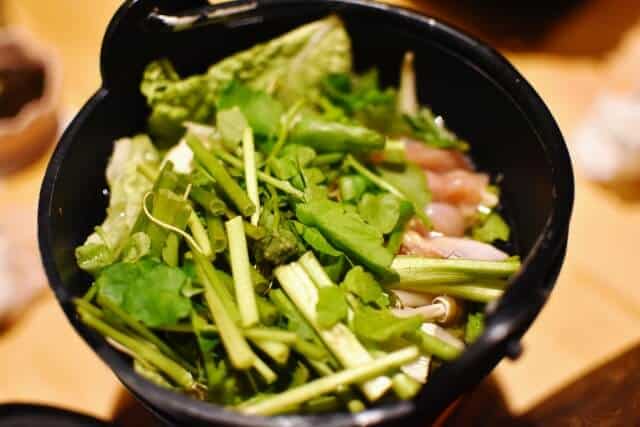
“Sendai Seri Nabe” has gained popularity over the past decade. Miyagi Prefecture, where Sendai is located, is the top producer of Japanese parsley called Haseri in Japan. To create a new local specialty known as “Sendai Seri Nabe,” which features a generous amount of this parsley rich in vitamin C and dietary fiber, collaboration with parsley farmers in Natori City, a major production area, was essential. This dish was the brainchild of an izakaya (Japanese pub) in Sendai City. It gained attention after an earthquake, partly because it was a way to support the affected areas. When a famous comedy duo from Sendai introduced it, “Sendai Seri Nabe” quickly became popular nationwide.
How to eat Seri nabe?
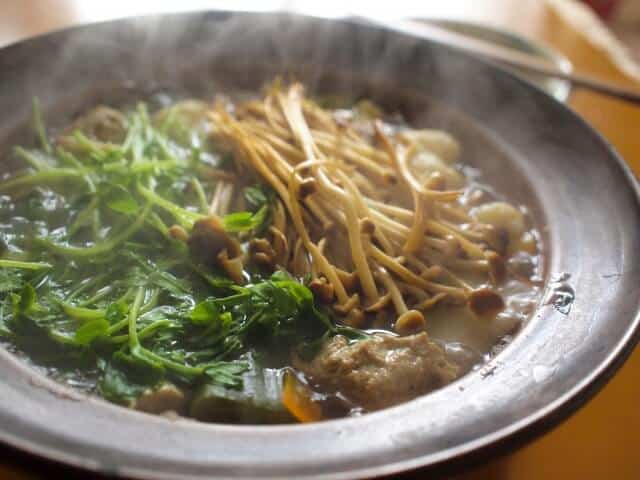
Seri Nabe is a tasty dish featuring a unique type of parsley called seri, known for its varying texture and flavors in different parts. What’s special about Seri Nabe is that you get to enjoy the whole plant, including its roots. To savor this dish, start by adding meat to a flavorful soup stock. After about 20 seconds, add the seri roots, then the stems and leaves, and dig in.
Keep an eye on the cooking time, especially if you’re using Natori-produced seri, as it cooks quickly. The goal is to enjoy it while it’s still a little chewy, similar to shabu-shabu. You’ll relish the crispiness and the rich seri flavor that fills your mouth. Some restaurants might offer options like udon or zosui to finish your meal, but soba pairs wonderfully with duck meat. Don’t worry if you’re not sure how to eat it; some places will provide instructions to guide you through the delicious experience.
Health Benefits of Seri Nabe
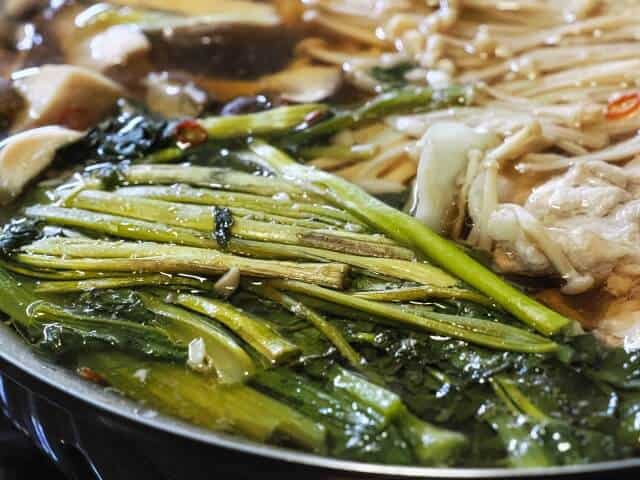
Both Sendai Japanese parsley and other varieties of Japanese parsley are packed with essential nutrients that are great for your health. They contain vitamin C, which boosts your immune system, and minerals that help with bone and blood health. The green stems are loaded with beta-carotene, often found in green and yellow veggies, which acts as an antioxidant, protecting your body from harmful substances and enhancing your immune system. These parsley types are also rich in dietary fiber, which is excellent for preventing and relieving constipation.
Because of their nutritional value, locals used dried seri as a herbal remedy known as “suikin.” It’s not just for reducing fevers; it’s believed to be effective against conditions like rheumatism and jaundice when brewed into a medicinal tea. So, enjoying these parsley varieties can provide a range of health benefits!
Seri nabe FAQ
- What are some side dishes that go well with Seri nabe?
Depending on the restaurant, the side dishes vary, such as udon or ojiya, but we recommend the soba. The crunchy, unique texture of the seri goes perfectly with the umami-rich broth that oozes from the chicken and duck meat, making it so delicious that you’ll want to drink it to the last drop.
- Is Seri Nabe a seasonal dish, or can it be enjoyed year-round?
You can enjoy Seri Nabe year-round, but it is particularly popular during the colder months in Japan. Locals eat this dish whole from roots to leaves in season from September to March, as the winter root is used. It is especially recommended around January when it gets much colder. However, with the availability of ingredients in modern times, you can find Seri Nabe in restaurants and homes throughout the year.
Seri nabe Recipe
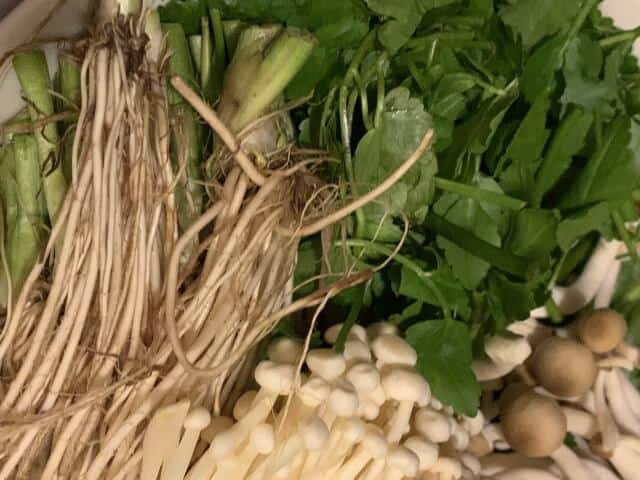
Seri nabe Ingredients
| Ingredients of Seri nabe for 4 persons | Measurements |
|---|---|
| Parsley | 18g |
| Chicken thigh | 80g |
| Burdock | 15g |
| Tofu | 40g |
| Mushrooms (Maitake, etc.) | 50g |
| Green onion | 25g |
| <Seasoning> | |
| Chicken soup | 180g |
| Bonito soup | 540g |
| Mirin | 36g |
| Sake | 20g |
| Light soy sauce | 45g |
How to make Seri nabe?
Cut the long-grown Japanese parsley into pieces about 5cm wide, from the roots to the stems and leaves. Cut the chicken into bite-sized pieces, cut the burdock root into cubes, cut the tofu into 5cm cubes, and cut the green onions diagonally.
Make stock from chicken bones (ready-made chicken stock is also acceptable), season with sake, mirin, and light soy sauce, and bring to a boil.
Add everything except the boiled seri and tofu and simmer until cooked through. Once the chicken is cooked, add the tofu and the root part of the parsley and simmer a little more. Then, once the tofu is hot, add plenty of the leaves and stems of the Japanese parsley, turn off the heat, cover with a lid, and wait a few minutes.
Add rice to the remaining pot soup and make porridge to enjoy twice (even if you add eggs).
Where to buy Seri nabe?
Inaho (いな穂)
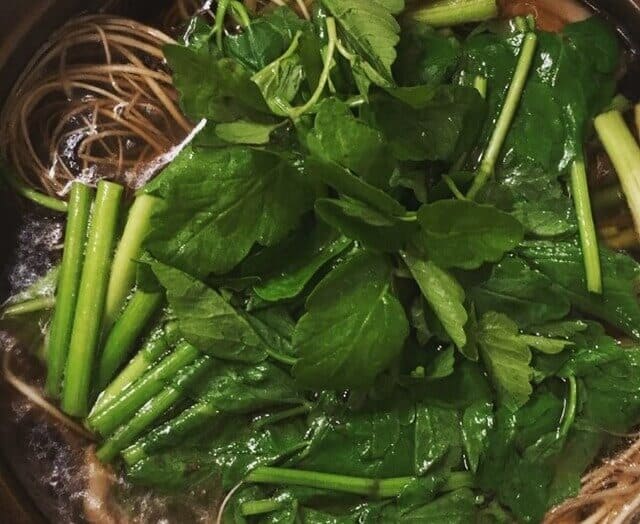
This is the birthplace of Sendai’s Seri Nabe. At Inaho, they served seri-shabu instead of seri-nabe. You can enjoy the exquisite Seri-shabu quickly simmered in the soup stock made with duck meat. A la carte dishes such as grilled conger eel are also popular, and you can enjoy rare brands of alcohol.
Kuranosho main store (蔵の庄 総本店)
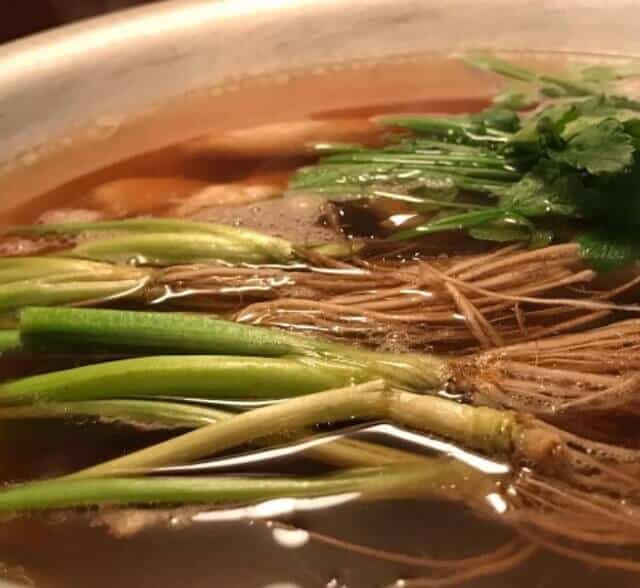
Kuranosho Sohonten is a famous Seri Nabe restaurant located at the entrance of Hapina Nakacho Arcade. Everything from ingredients to seasonings are locally sourced, and during the season when seri is in season, the restaurant is crowded with customers looking for seri hotpot every day. Kuranosho’s Seri Hotpot is a simple hotpot made with chicken and seri. As a result, you can fully enjoy the deliciousness of the seri.
Wabisuke (居酒屋 佗び助)
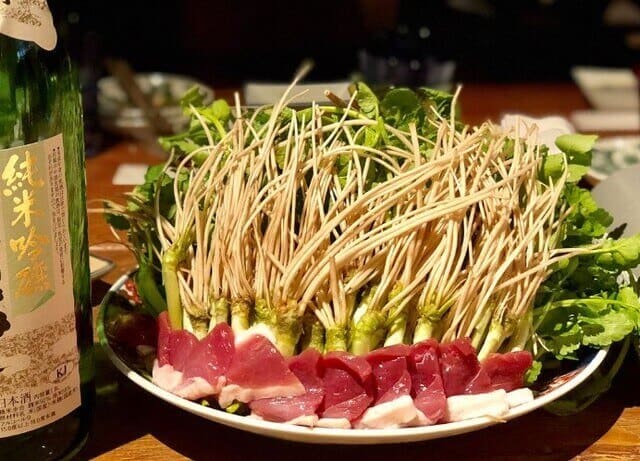
Wabisuke is such a popular restaurant in Sendai that reservations are required. This restaurant has been offering seri nabe under the name Sendai seri nabe for over 10 years. It is said to be the origin of duck soup stock hotpot, and many people come from far away. For the seri hotpot, you can enjoy large seri and duck meat in duck stock soup.
Final Thoughts
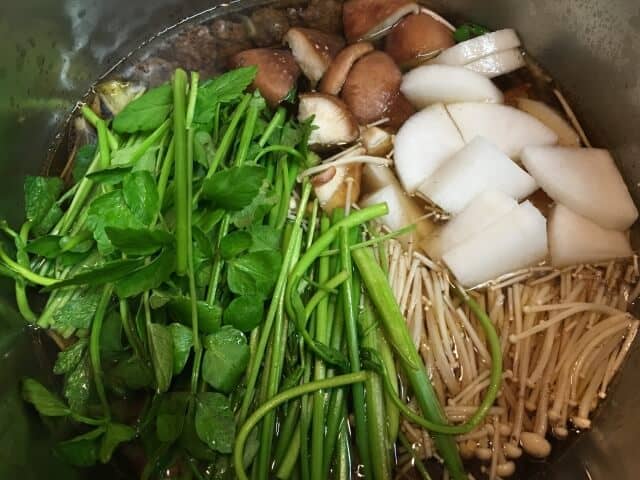
We hope this glimpse into the world of Seri Nabe has piqued your curiosity about this beloved Japanese dish. Whether you’re looking to try it at a local restaurant or even attempt making it at home, Seri Nabe offers a delightful journey into the heart of Japanese culinary traditions. With its rich history and regional significance, it’s a dish that not only warms the stomach but also enriches our understanding of Japanese culture. So, the next time you come across Seri Nabe, you’ll have a little more knowledge about the story and flavors it brings to the table.
You can check some Japanese nabemono dishes that we know you would like to try too.



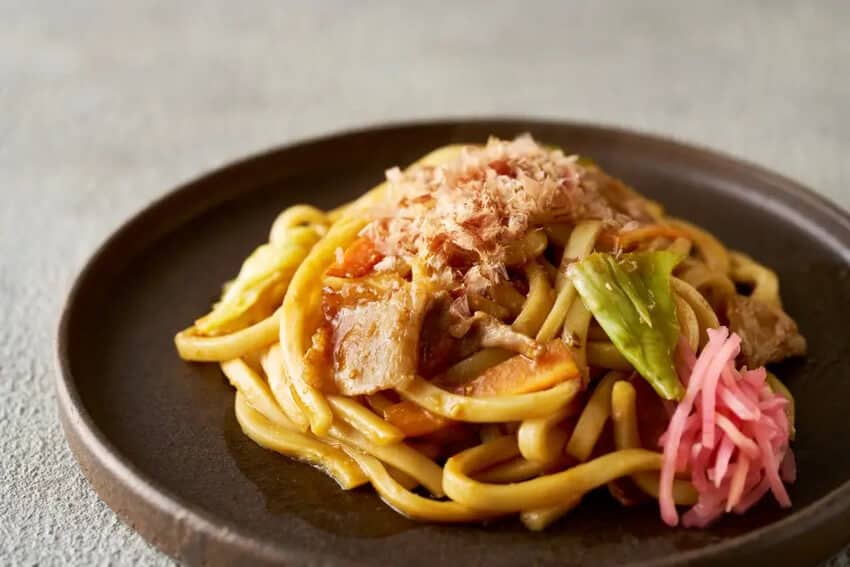
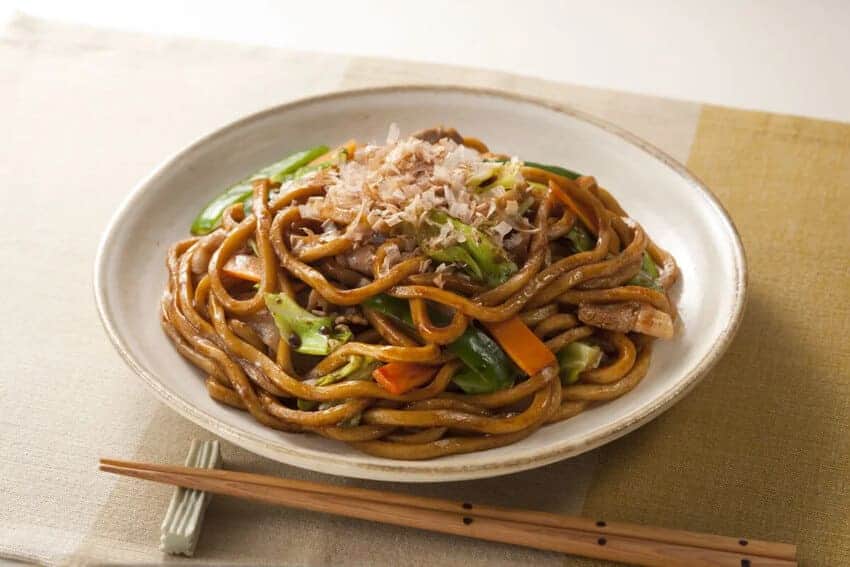

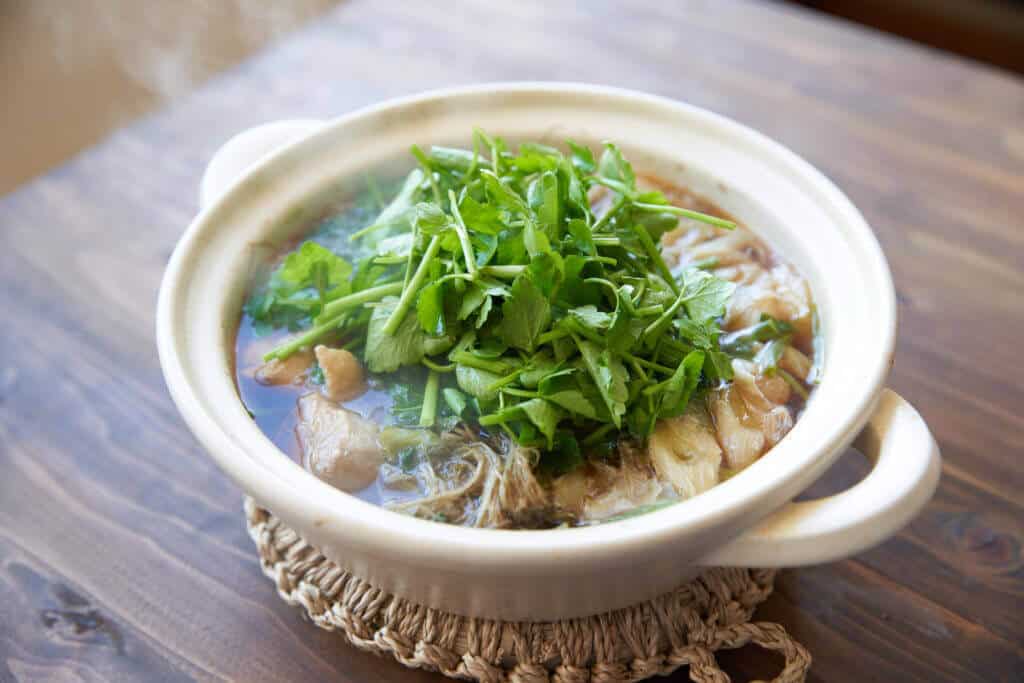
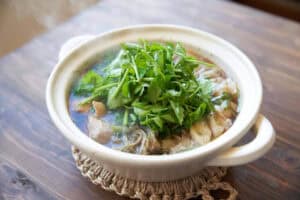
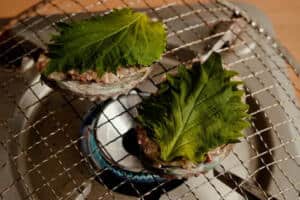
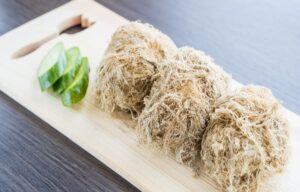

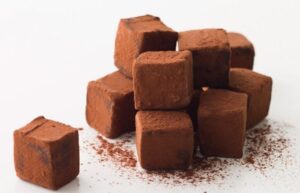
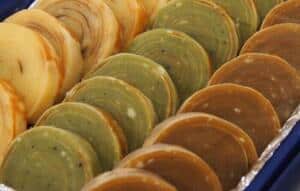
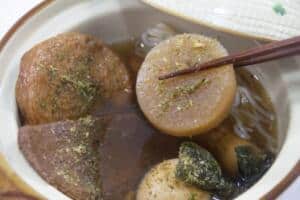


Comments